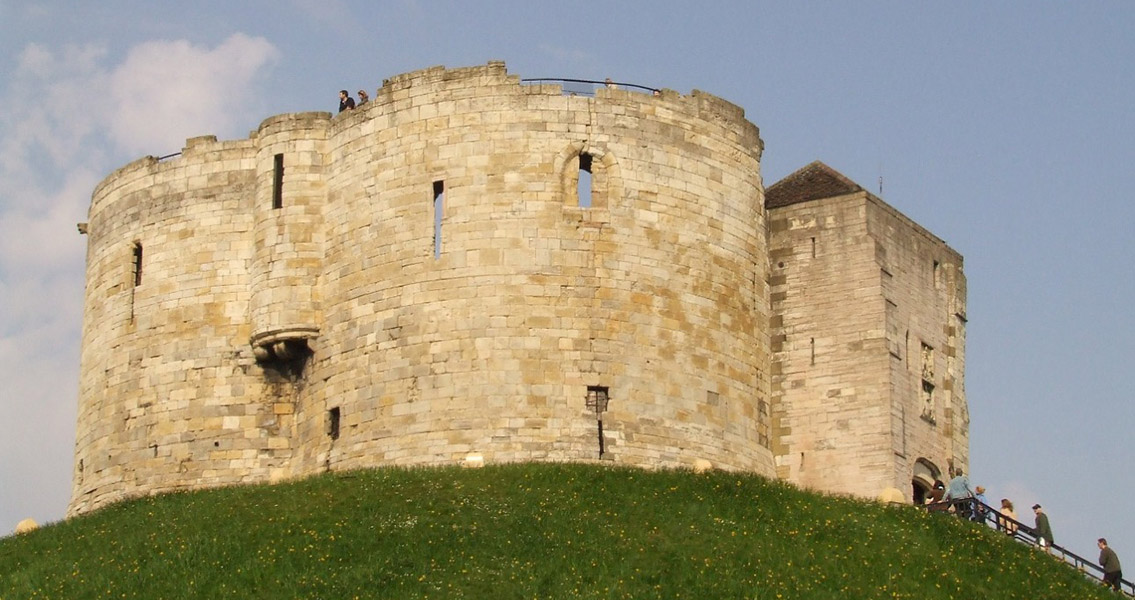<![CDATA[On the evening of 16th March, 1190, the entire Jewish Community of the English city of York was barricaded in the city's Clifford Tower. Outside, an angry, hateful mob gathered baying for blood, in what is now known as the York Pogrom. Those in Clifford Tower's keep were left with few options. Leaving the castle would mean almost certain death. Staying inside was a short term solution, the city's warden had summoned the local militia to assist the local rioters, meaning the doors to the keep would soon be opened. An offer was made that any Jew leaving the tower would be spared if they converted to Christianity. As well as forcing them to abandon their faith, the deal seemed likely to be a trick. And so, with no alternative, many of those in the castle chose suicide. Men killed their wives and children first, before setting fire to the keep. Some of the Jews survived, but their fears proved correct. With the fire raging in the keep on the night of the 16th they begged the mob for mercy, promising to convert to Christianity. As they left the castle they were murdered by the crowd waiting outside. In all it is estimated that 150 Jews died as a result of the York Pogrom - the city's entire Jewish community. The riot had started when fire engulfed the city several days earlier, with sources differing as to whether the fire was started by accident or was a consequence of the mob burning down the house of Benedict of York, a prominent Jew from the city. Amid the flames, a murderous rampage started, with relatives of Benedict (who had died some six months earlier) being hunted down and killed by the rioters. Fleeing the anti-Semitic hysteria, York's Jewish population headed for the keep of Clifford tower, then a wooden building. The city's warden, who had let them into the castle in the first place, returned and tried to gain access to the keep. Those hiding in the castle refused to let him in, believing he had been corrupted by the rioters to lure the Jews into a trap. Quickly, the castle became surrounded. Anti-Semitic hysteria had engulfed Europe at the time of the massacre, and events like the York Pogrom were far from unusual in the time period. The late twelfth century was the height of crusader mania across Europe, with aggression being directed against Jews on the continent as well as Muslims in the Holy Land. Earlier in 1190, pogroms had taken place in France and Germany, fueled by Christian fervour and religious intolerance. In England in particular, the coronation of King Richard I in 1189 had been a major source of dispute. Jews had not been invited to the banquet in his honour, triggering a wave of riots around the country. Benedict of York, the man whose family were the first victims of the York Pogrom, was killed at one such riot in the city of Westminster. In the run up to the York Pogrom, anti-Semitic riots had taken place in Stamford, Lincoln and Norwich, despite the fact that Jews were officially protected by the king as his feudal vassals. These violent explosions of religious intolerance and paranoia were often encouraged by cynical scheming among the gentry. In York, accounts from the time claimed that Richard Malebisse, William Percy, Marmeduke Darell and Philip de Fauconberg encouraged the riots, sensing an opportunity to have their extensive debts to Jewish money lenders and bankers wiped out. After the flames of the Clifford Tower had finally dissipated into ashes, the men made sure all Jewish records were destroyed, thus absolving themselves of their debts. The York Pogrom, an often overlooked massacre that highlights the brutality of religious intolerance in Europe in the Middle Ages, left such a mark on the Jewish people that it has been immortalised in a kinah, (a kind of lamentation) recited on the fast day of Tisha B'Av. ]]>
Entire Jewish Population of York is Massacred in Pogrom
